In partnership with WVIA, with support from Coterra Energy, we’re bringing you a look behind the scenes at some of Northeastern Pennsylvania’s most successful manufacturing operations. Join us as we get to know the companies, the unique products and the hardworking people leading the way in reestablishing NEPA as a driving force in global manufacturing.
Follow along on this 10-part series that explores NEPA @ Work.
“Uniting Innovation, Engineering, Manufacturing and Distribution”
Paul Foster founded PowerRail in 2003. Originally, the locomotive parts and components distributor opened shop in Wilkes-Barre. As the industry evolved in the 21st century, so, too, did PowerRail’s business model. The young company shifted from simple distribution to manufacturing and re-manufacturing parts. According to PowerRail Executive Vice President of Finance and Operations, Kevin Wright, the company was born from an extremely calculated risk. “Paul saw an opportunity and risked everything he had to sell to the smaller railroads, which were getting beat up by the two OEMs (original equipment manufacturers), GE and GM.”
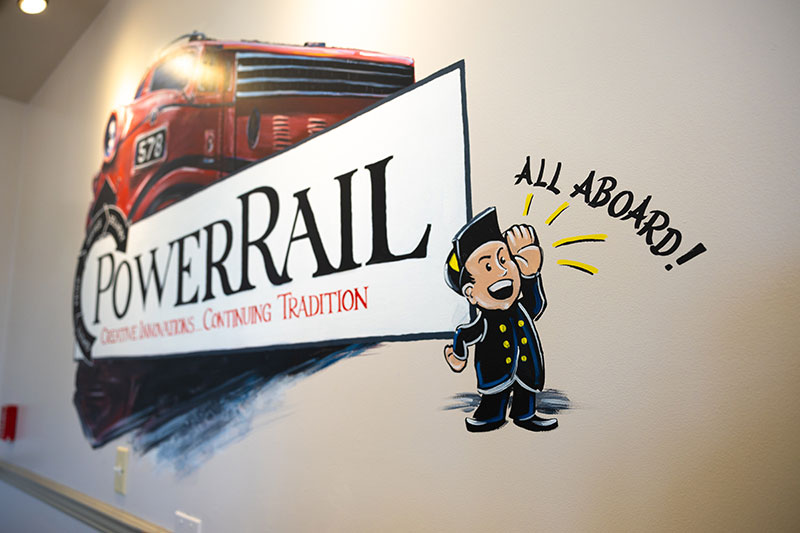
The art of exceeding customer expectations
The theory behind the move was based, for the most part, on the two things that had always been missing from the industry – reliability and customer service. And in the shadow of the giant OEMs, PowerRail carved out its own space. What Foster and his team didn’t realize was just how much space they had to work with. “So, he thought, if he was lucky, he’d achieve a million in sales in maybe five years,” Wright said. “And he did that in a year.”
And after only three years, Foster’s foresight had proven lucrative enough to prompt the company’s first move to a much larger, more accommodating 90,000 square foot facility in Duryea. “In order to grow, you have to control your supply chain, which is why he (Foster) layered in the manufacturing arm of the business,” Wright said.
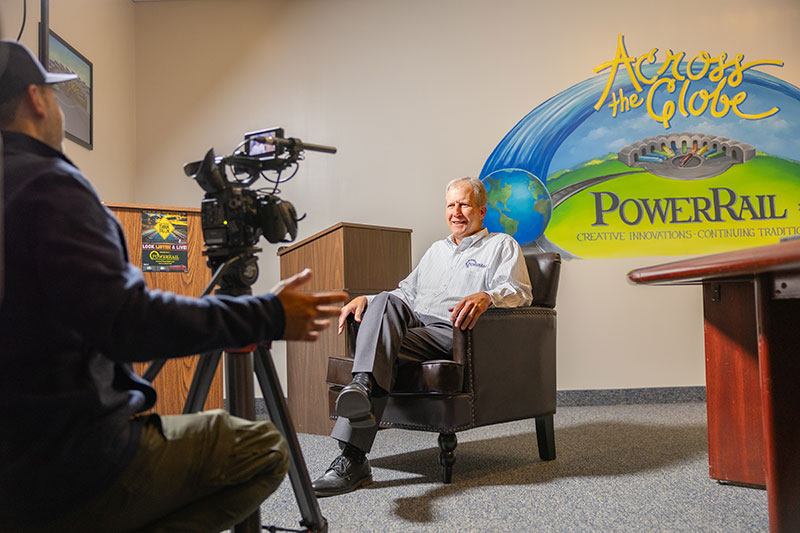
Then, the world came calling
Soon, with all wheels turning at their new facility, PowerRail’s reputation and reach expanded into global markets. Their innovative approach to troubleshooting and updating often outdated or insufficient technology of the locomotive industry became an indispensable commodity. Of course, it wasn’t long before PowerRail’s rapid rise from local distribution shop to global manufacturing leader in just two decades precipitated yet another move. They needed room to grow and yet remain nimble and self-sufficient when it came to warehousing and distribution. And they found just that in a massive 200,000 square foot site on Susquehanna Ave. in Exeter.
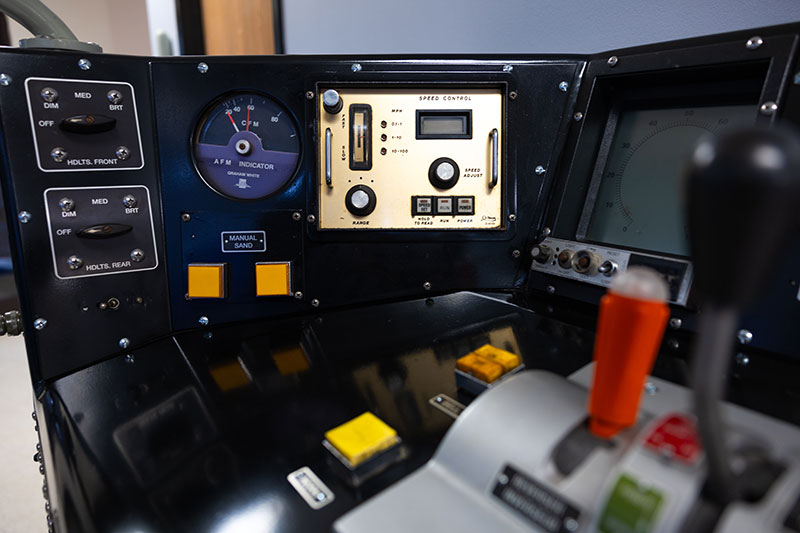
Two decades of unprecedented growth
In the spring of 2022, on the cusp of the company’s 20th birthday, PowerRail cut the ribbon on their new, state-of-the-art global headquarters. The all-in-one shop would house the company’s eight departments covering everything from management and accounting to engineering, design, manufacturing, warehousing and distribution. Outside of the Exeter headquarters, PowerRail has also grown to operate two additional U.S. locations in Georgia and Indiana. And internationally, they distribute through locations in Australia and Europe. Altogether, PowerRail employs a workforce of 160 people. Today, 95 of those employees work out of the Exeter location.
You don’t have to make five calls. You just make one call to PowerRail, and we’re going to have everything you need, and we’re going to tell you exactly when you’re going to get it and that’s when you’re going to get it.
Driving the Industry Forward

A business model designed to keep America’s freight lines moving
Stripped down to its very basic core, PowerRail is an industry certified manufacturer, re-manufacturer and distributor of locomotive parts and components. Butch Gaudet, PowerRail Vice President of Quality and Engineering puts it plainly. “We are the original manufacturer of a lot of the components you would find on a locomotive.” He continued, “In our warehouse, you could probably build three quarters of a locomotive from all the different components that we stock and supply to customers.” Essentially, if it makes a locomotive move, they’re designing it, building it or modifying it right here in Exeter, PA. PowerRail also distributes products for the passenger transit, marine and power generation industries.
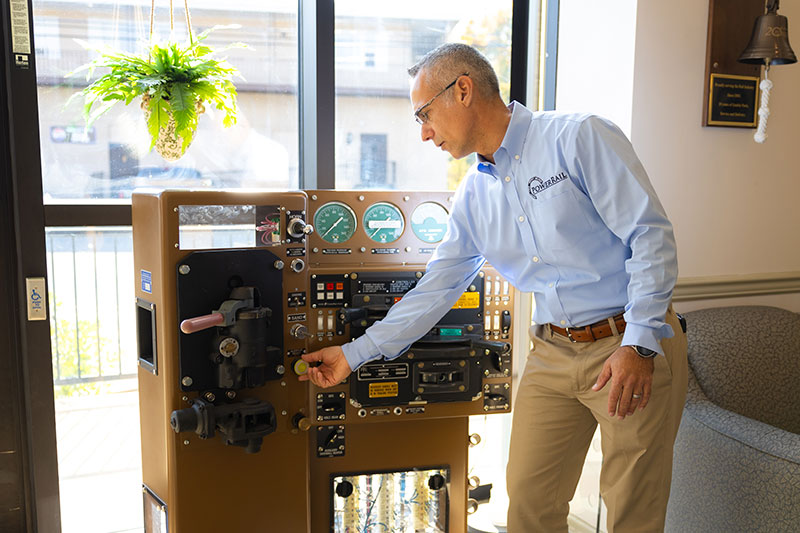
The idea of selling time
Freight all over the world exists almost in a state of perpetual motion. Goods move from factory to rail car to boat, truck or plane and, ultimately, to the consumer in a seemingly endless economic loop. In such a system, there is little sympathy for lost time. If your locomotives aren’t moving, you’re not meeting customer demand. And if you have to wait on much needed parts or components for repair, your downtime travels through the system affecting every link in the chain along the way. This is precisely the space PowerRail fills within the context of the industry at large. Their efficiency and reliability keep the whole system going. And their dedication to customer service ensures fewer headaches for everyone involved.
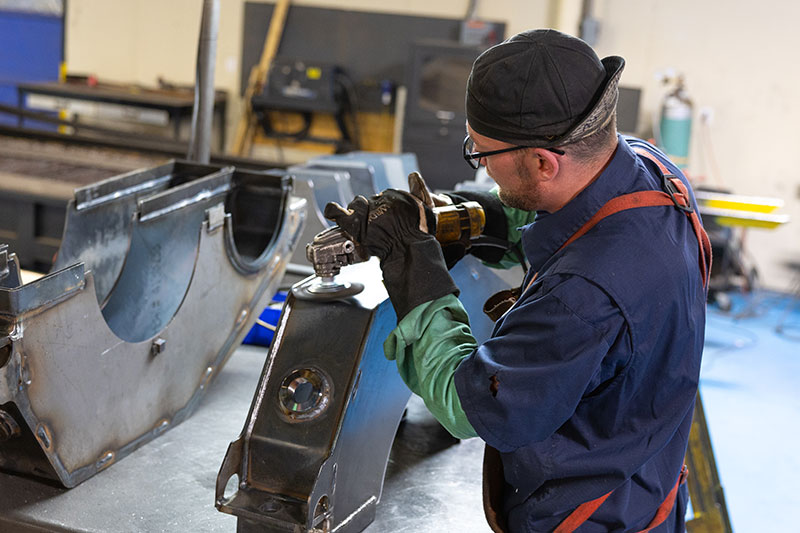
Striving for more sustainable locomotive parts
Locomotive parts are durable. Many are made from steel and have been in service for decades. When they fail, however, it becomes a matter of “why? and “how can we make it better?” These questions drive a large part of PowerRail’s manufacturing operation. According to Gaudet, “These components from 40 or 50 years ago are re-buildable over and over, and we have the ability to build new or build unit exchange with the same components.” And the engineering and design teams do just that by utilizing 3D modeling and prototyping, CAD design software and reverse engineering to reimagine, re-work and essentially re-manufacture the old part.

Superior quality assurance
And as an AAR M-1003 certified shop, the technology doesn’t stop at design. They also use it to test each and every concept before it goes to the production floor. The process helps customers meet new government regulations, update their old components and even extend the life of new components.
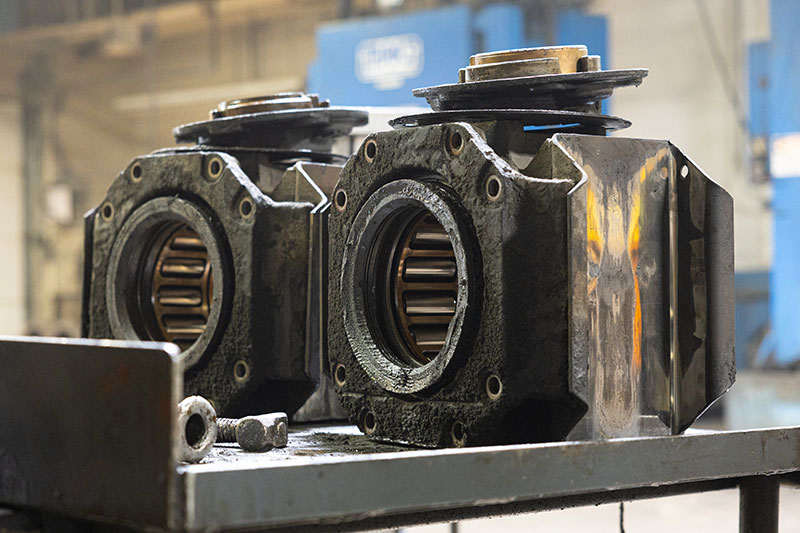
“If the normal run rate for a part is five years, maybe we can develop something that runs for ten years.” – Kevin Wright
One major contributor to PowerRail’s success is their New Unit Exchange (NEW-UX) Program that encourages customers to trade in old, failed, but rebuildable components for new parts. The program promotes industry sustainability, reliability and substantial cost savings for the customer. It benefits both the big clients like BNSF Railway, Norfolk Southern and Union Pacific and the much smaller, budget-conscious customers. For most of those smaller freight operations, the appeal of PowerRail is that they’re never forced to buy in bulk. “We’ll sell one, single light bulb or one, single air filter,” offered Gaudet. “Whatever the customer needs, they get, and they don’t have to buy cases or pallets of parts if they don’t want to.”
We like to ask customers, “what are you having problems with? What do you change all the time and see that it’s just not working or breaking prematurely?” We talk to customers about what they’d like to change, and then we take on those projects.
Incentivizing a Hard-Working, Loyal NEPA Workforce
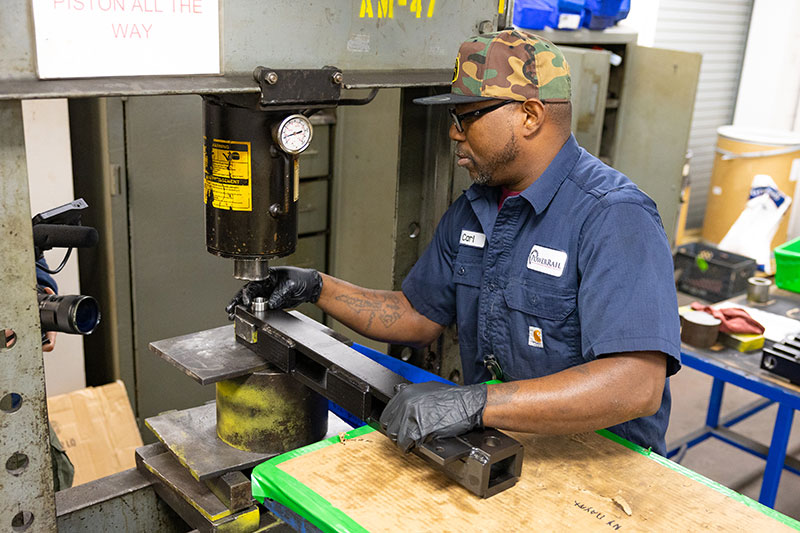
“There’s a family aspect to it for sure.” – Kevin Wright
Aside from a mission to provide exceptional, efficient and reliable customer service, PowerRail has achieved most of its success by keeping its people happy. From the sales offices to the engineering labs to the warehouse and production floors, PowerRail’s workforce displays a contented, family atmosphere. Gaudet recalls, “I can remember Paul walking into the warehouse and meeting the new person and shaking their hand, and watching him work beside us on a Saturday.” From those early days and onward, that camaraderie has been a part of this company. He continues, “And I still see that with our managers today. It’s like a family here.”

The company’s success is their success
Heavy lifting is par for the course in a routine day at PowerRail. Building and rebuilding locomotive parts and components requires heavy machinery, regular training and many valuable years of experience. Many American companies start with big dreams, or clever solutions to common problems and grow from there. But when a company expands as much as PowerRail has in just over twenty years, there needs to be a greater unifying factor at work. For Kevin Wright, it’s the strong, hard-working people of Northeastern Pennsylvania. “People here will run through walls for you, but they want to see you sweat first,” Wright quipped with a smile. “They want to see that you’re part of them. It was something that I learned early on. It’s kind of an unusual area in that regard.”
In 2015, Paul Foster decided to offer PowerRail’s workforce an Employee Stock Ownership Plan. Today, 30% of the company remains employee-owned.
Industry Recognized Reliability
PowerRail holds an AAR M-1003 Certification from the Association of American Railroads. This certificate ensures customers that every part or component manufactured or re-manufactured in a PowerRail facility has undergone strict quality testing procedures.
PowerRail’s Engineering and Development Department utilizes the latest state of the art technology to produce working prototypes and models of parts and components for rigorous testing and inspection. With a quality assurance certificate, a highly skilled and trained team of engineers and technicians, modern technology and one of the most trusted names in locomotive parts manufacturing behind every product, there’s no doubting PowerRail’s commitment to customer service.

DiscoverNEPA and WVIA are proud to highlight the tremendous manufacturing organizations and opportunities within our region. We offer a special thank you to Coterra Energy for generously supporting this project.


















